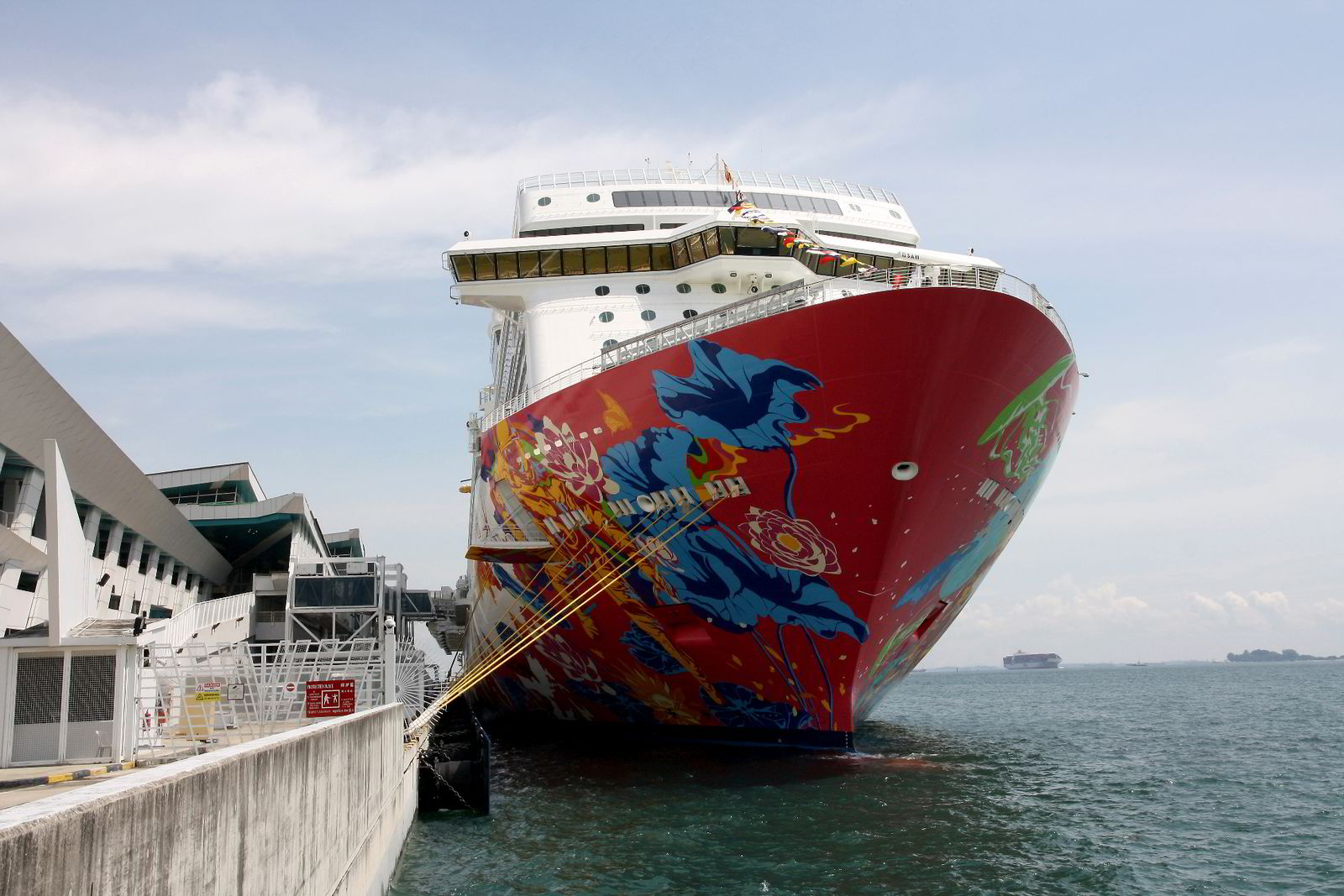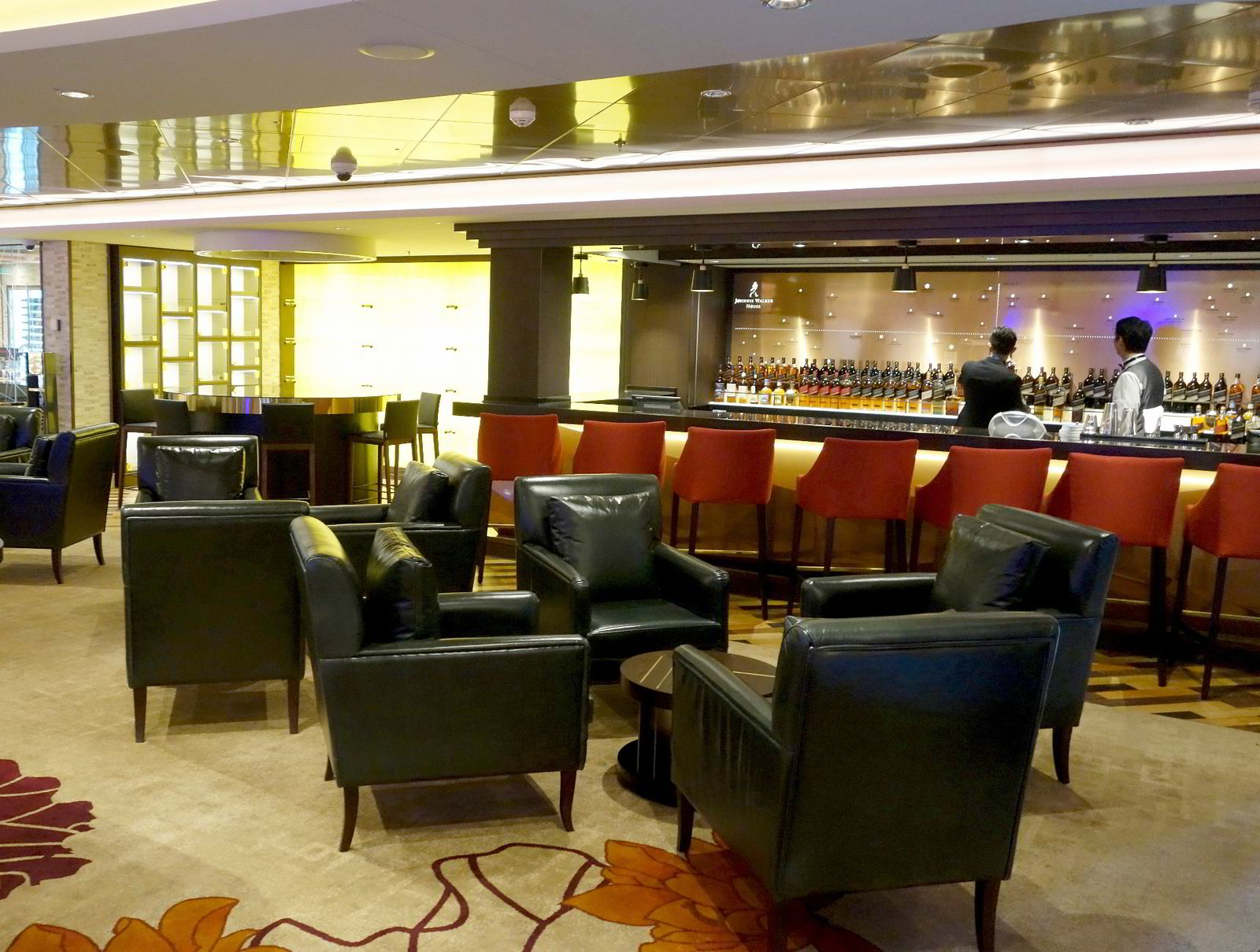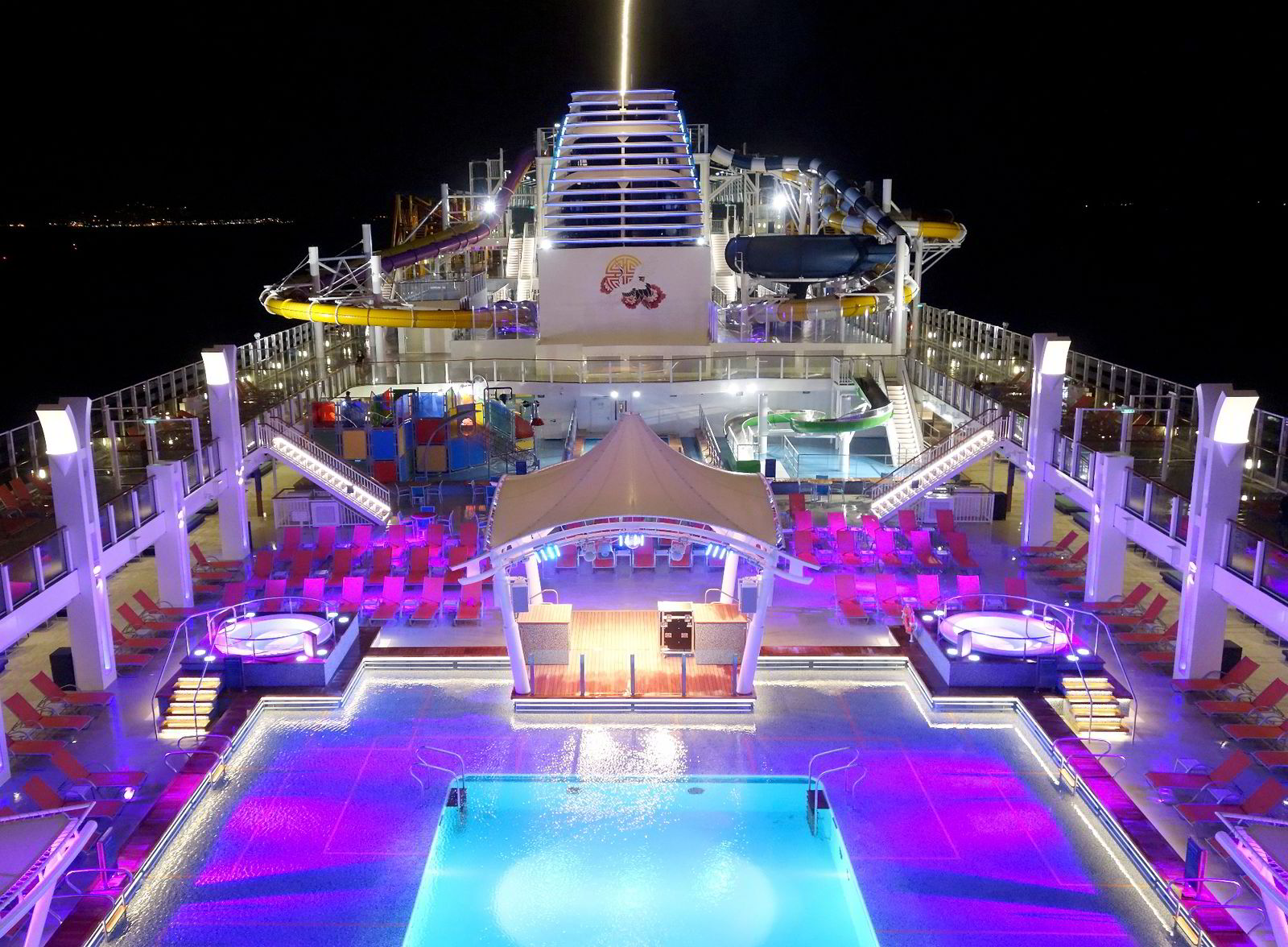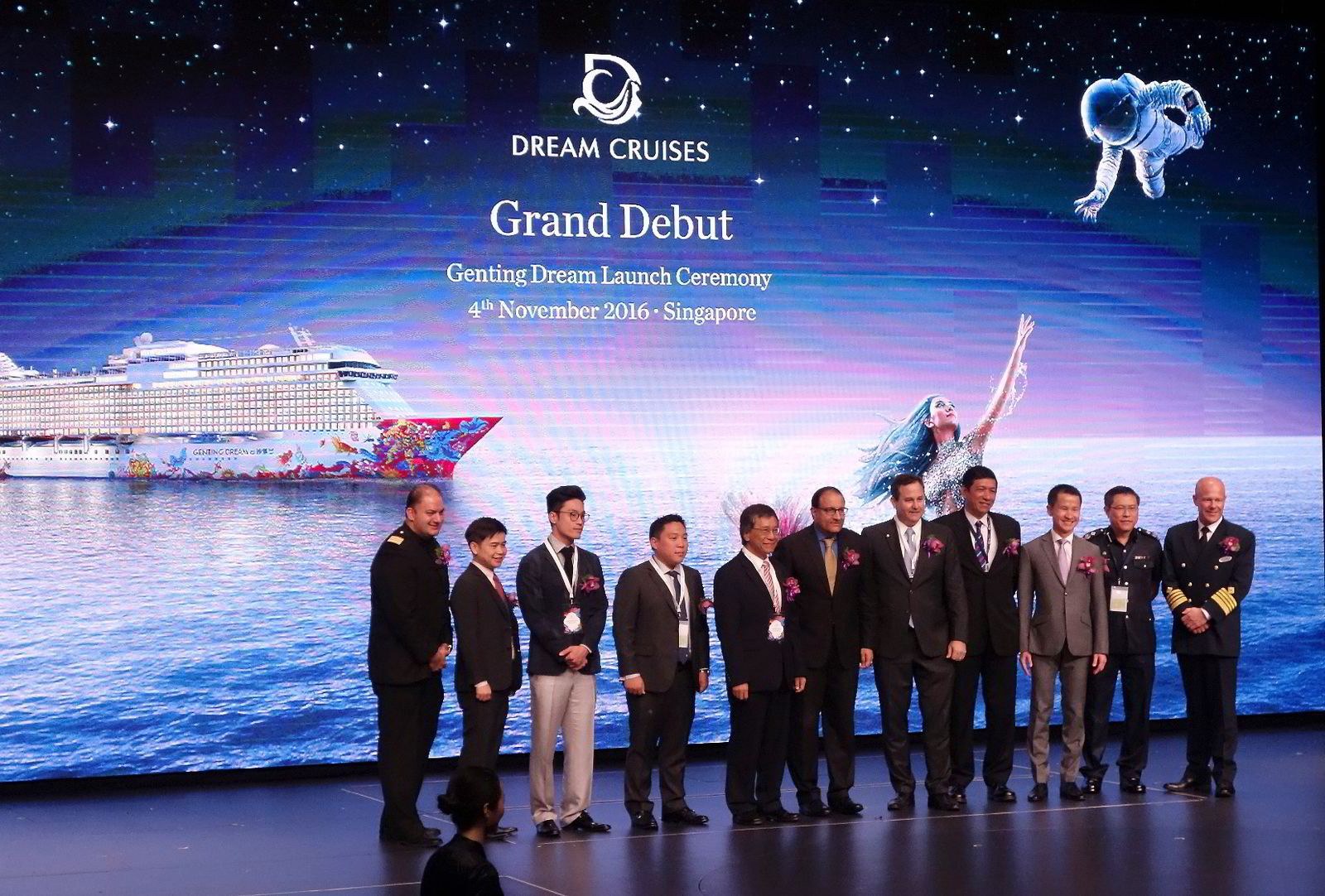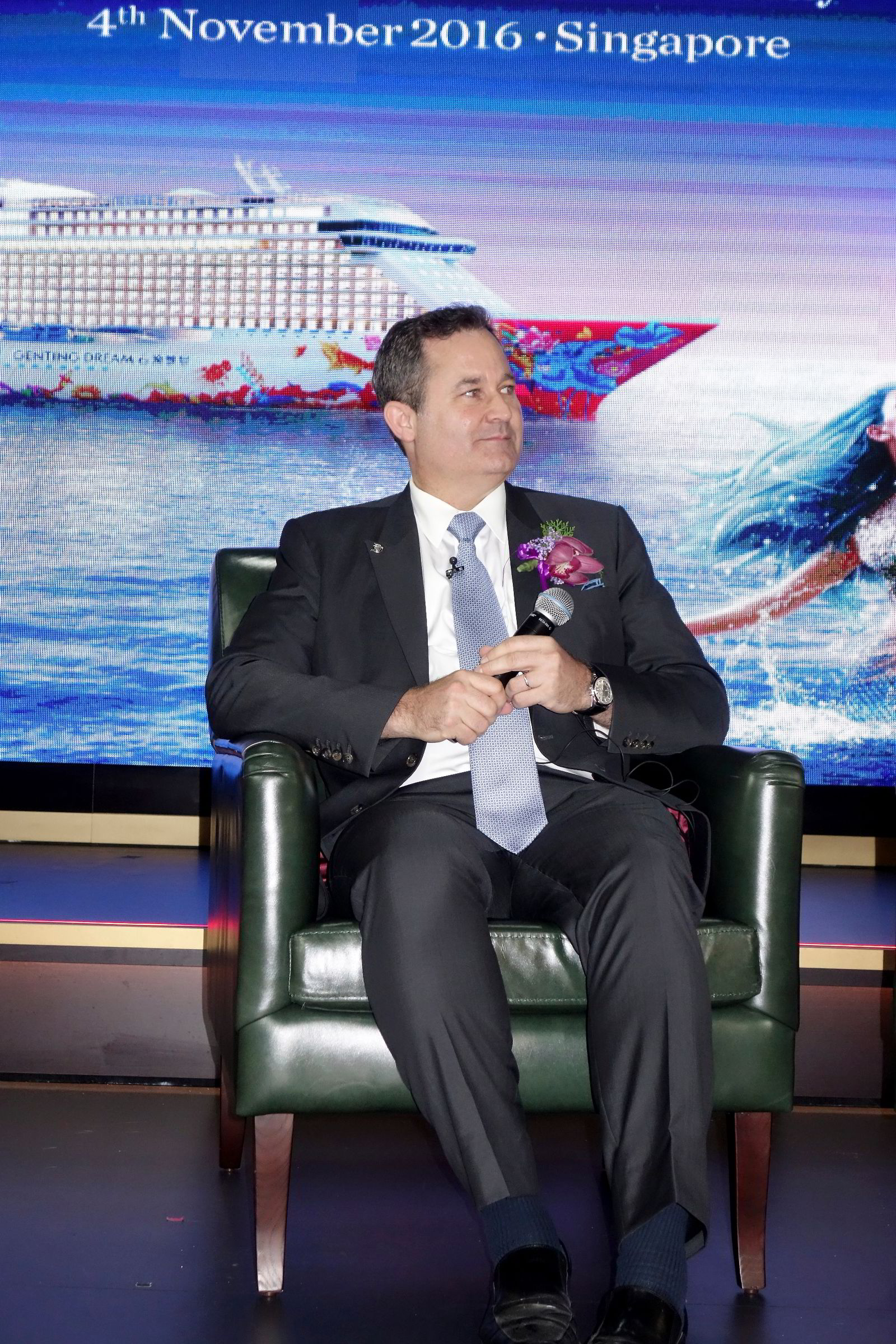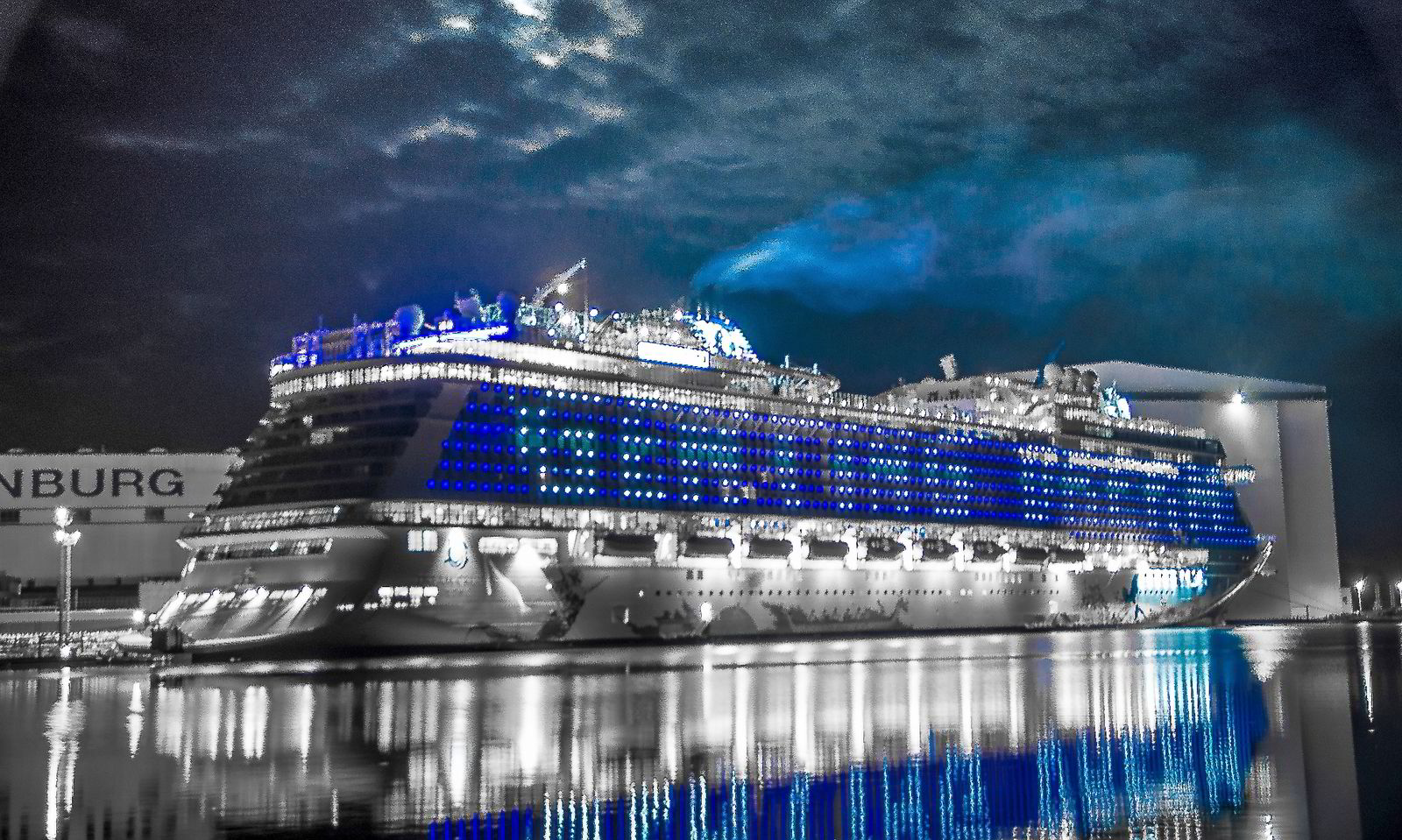Last Friday was a momentous occasion for Asian cruise conglomerate Genting Hong Kong when its new 150,000-gt cruiseship Genting Dream embarked on its inaugural voyage.
The Meyer Werft-built ship is the first newbuilding the company has constructed for the Asian market since 1999 — and the first for new premium Asian cruise brand Dream Cruises.
“Welcome to my dream,” said Genting Hong Kong chairman and chief executive Lim Kok Thay, who welcomed guests and media to the inauguration ceremony on the $1.4bn Genting Dream in Singapore.
The ship is touted as the first luxury category cruiseship built specifically for the Chinese cruise market. The luxury title certainly fits the Genting Palace, an exclusive three-deck section of the ship — adapted from the upscale Crystal Cruises product — that is reserved for the occupants of its 142 suites staffed by private butlers. These high-end passengers have their own dining, lounging and gaming spaces, as well as a private lido and swimming pool situated in a prime location on the ship.
The rest of the ship, which carries around 3,400 passengers, is certainly plusher and more luxurious than the ships of Genting Hong Kong’s Star Cruises brand, although the product is still firmly in the mass-market range — albeit with nicer bed linen, toiletries and contemporary Asian decor.
Mass-market cruising is the driving force behind the phenomenal growth of the Chinese cruise market over the past five years — and the creation of the Dream Cruises brand is what Genting UK deemed necessary to play catch up to the many cruise lines that have rushed to deploy their biggest and newest ships in China.
Dream Cruises president Thatcher Brown, a hospitality industry veteran who was recruited from Costa Cruises to launch the new brand, appeared confident that the company was well prepared to muscle its way into the Chinese cruise market, despite decreasing yields caused by the increase in competition.
“Growth in China has been extraordinary,” he told TradeWinds after the inauguration ceremony.
“In 2015 and 2016, it reached 69%. This has put pressure on pricing and the Chinese distribution model, which is mostly a charter model. A couple of brands have pulled back, so supply is slowing at a more reasonable level. Even so, normal growth rates will remain strong.”
Brown noted that Genting Hong Kong has had a presence in the Chinese market for the past 23 years through its Star Cruises brand — and both that company and Dream Cruises are taking a different approach to the Chinese market than the charter model adopted by their competitors.
Genting Hong Kong has its own sales offices in China and an established distribution network. Therefore, it does not charter ships to various Chinese tour groups to source for passengers.
Michael Goh, Dream Cruises’ vice-president of sales, says this direct distribution network is the only way to grow the Chinese market in the long term.
“When you charter your ship, you lose a lot of control over your product, which could push your product downwards,” Goh said.
Both Brown and Goh are adamant there will be no shortage of Chinese passengers to fill the Genting Dream and future ships, although they concede it will require a lot of hard work.
“The demand in China is there,” said Brown. “We just need to wake it up.”
The Genting Dream will be deployed permanently out of Hong Kong and Guangzhou, offering two cruises a week to ports in both China and Vietnam.
Meyer Werft will complete a second identical ship — the World Dream — in November 2017 but its deployment plans have yet to be finalised.
“With the first ship, we give stability to the Hong Kong and Guangzhou markets,” Brown said. “The second ship will give us flexibility. We are strongly considering basing the ship in Singapore.”
While Dream Cruises’ target clientele is what Brown describes as the affluent, independently minded Chinese, the company is also hoping to develop a sizeable international customer base. The company already is actively targeting passengers from elsewhere in Asia by developing tie-ups with travel agents to offer fly-cruises out of both Hong Kong and Guangzhou.

